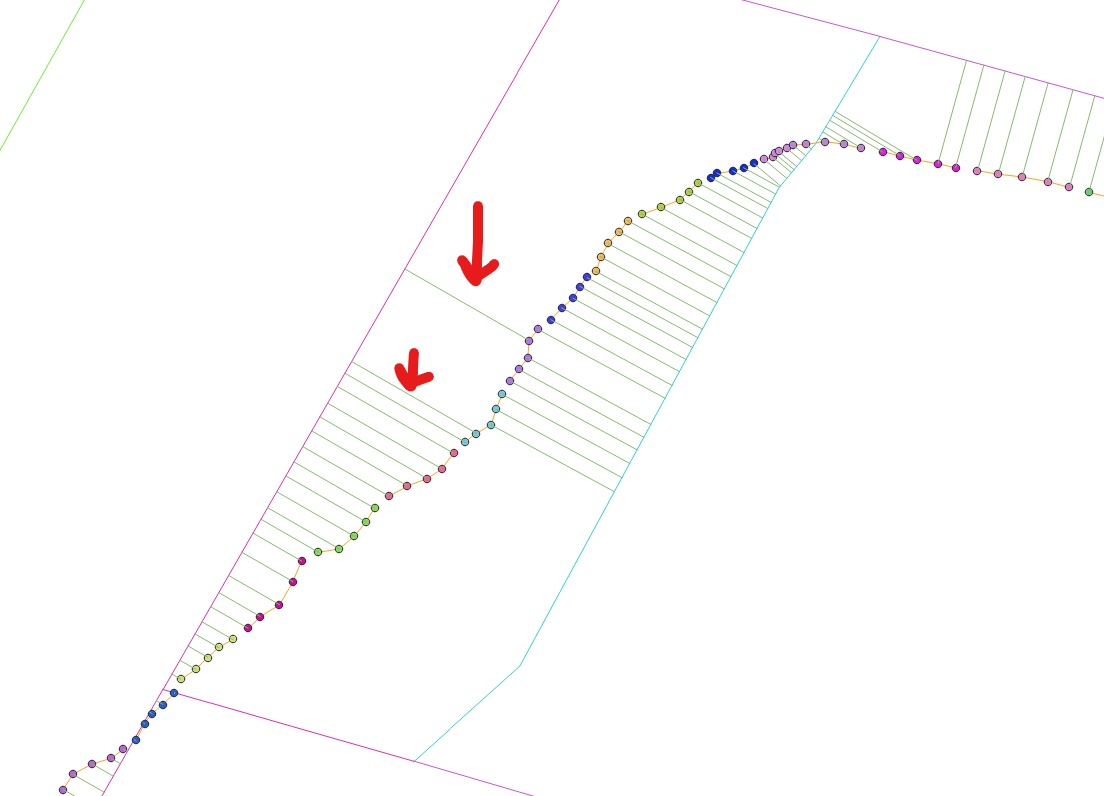Hi all,
I have GPS coordinate as input and I would like to snap them to the closest lines, which works perfect with combination of Neighborfinder. However, While finding the closest, I would like to consider the consecutive points as well.
In the images, I have group the GPS point based on timeseries. So if the points have the same color, there are in the same time series. As you can see the closest line for some of the points are different then consecutive points. How can I include the group of consecutive points while finding the closest line to the point?
Thanks in advance.






